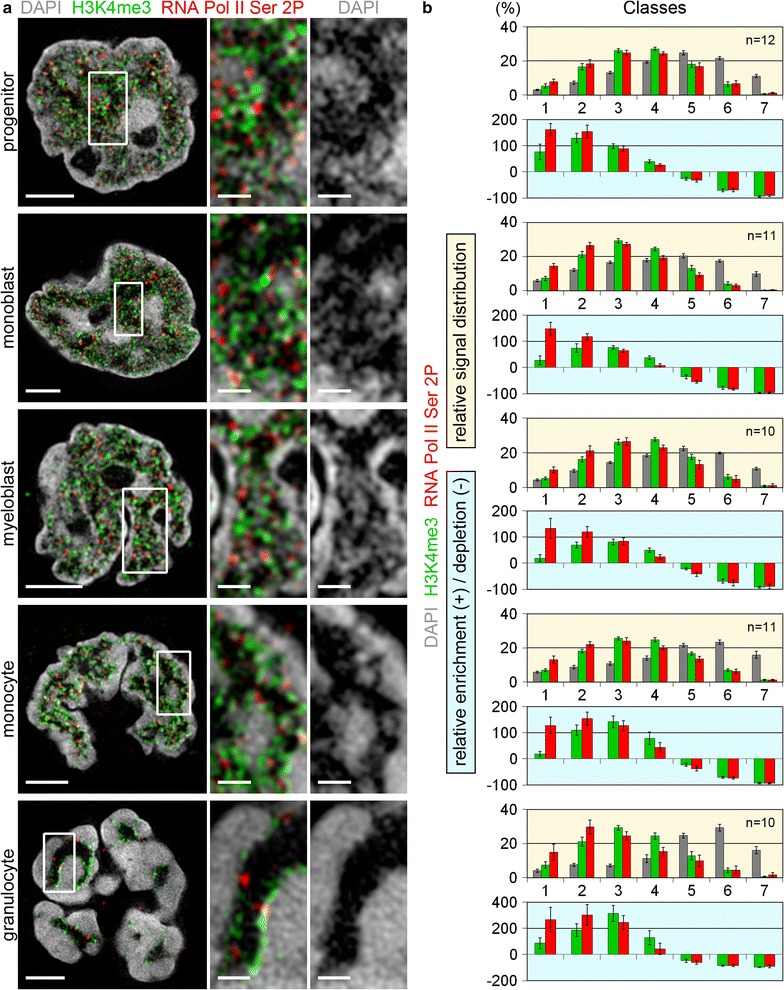Fig. 5.

Comparative topology of H3K4me3 and RNA Pol II Ser2P, markers for transcriptionally permissive/active chromatin in relation to chromatin density maps. a 3D-SIM light optical mid-sections from 3D acquisitions of whole nuclei and representative inset magnifications delineating DAPI stained DNA (gray), immuno-stained H3K4me3 (green) and RNA Pol II Ser2P (red). All cell types show a preferential localization of H3K4me3 and RNA Pol II Ser2P at decondensed chromatin sites or at the surface of compacted chromatin domain clusters. Scale bars 2 µm; insets 0.5 µm. b graphs highlighted with yellow background: relative signal distribution of H3K4me3 (green) and RNA Pol II Ser2P (red) within respective DAPI defined DNA intensity classes. p < 0.001 for DAPI vs. H3K4me3 and RNA Pol II Ser2P in all cell types. Graphs highlighted with light-blue background quantified levels of relative enrichment (positive values) or depletion (negative values) of H3K4me3 (green) and RNA Pol II Ser2P (red) signals relative to the classified DAPI signals. All cell types show a similar profile with a distinct overrepresentation of both markers in low chromatin density classes and a corresponding underrepresentation in high density classes. Note the stronger enrichment of RNA Pol II Ser2P compared to H3K4me3 in class 1 (IC compartment). n Number of analyzed nuclei; error bars standard deviation
